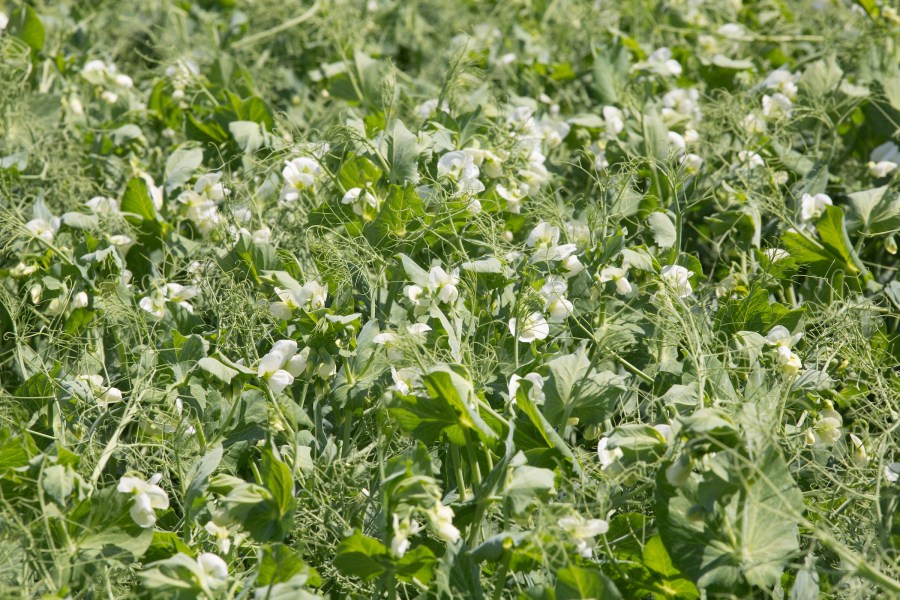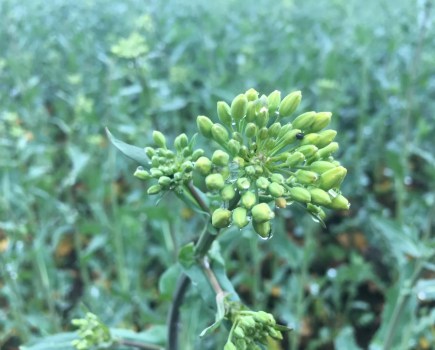A crop of LG Stallion blue peas has broken a world record pea yield for the second time. Charlotte Cunningham reports.
Harvested on 7 Sept, a crop of LG Stallion blue peas has yielded a record 7.48 t/ha at 15.04% moisture. The last world record — set back in 2017 — was also held by a crop of LG Stallion which yielded 6.47 t/ha, at an average of 15.35% moisture.
Lincs grower, Tim Lamyman, is delighted with both the yields and quality to come off this year’s pea crop.
“Who would have thought that 2019 would be the year for a world record crop,” he says. “I am absolutely thrilled with the final performance of the peas as they have shown a consistency in biomass through the season — much more so than last year. In places the crop was 6ft tall, and this has obviously translated into yield.”
LG Stallion was the field pea variety of choice, selected for its high yield potential and good standing ability. This is the third year that Tim has grown the variety, breaking the world record yield in 2017, and having success again with the variety in the very difficult season of 2018 when it yielded 5.6 t/ha at 14.76% moisture.
The peas follow a second wheat in the seven year rotation which also includes wheat, spring barley and oilseed rape. “The field chosen for the crop is much like last year, a grade 2 chalky loam which offers the potential for well-structured root systems, enabling easier nutrient uptake — which I believe is key to a high yielding crop,” says Tim.
“As the spring was so dry, we adapted our cultivations for the peas through an intensive min-till approach which allowed us to create a more level seedbed.”
Cultivations
Before drilling, the field had two passes with a Lemken Terradisc and finished with a Vaderstad carrier (discs and crumble roller), and then it was rolled with Cambridge rollers the day after drilling.
The crop was drilled on 9 Apr using a Vaderstad Rapid, with the coulters set at a 4-inch row width. The seed was treated with Wakil XL + GPA, with the aim of early downy mildew control from the Wakil XL and better root development, as well as plant establishment with the phosphite-based nutrient GPA.
Established plant populations were 85 plants/m2, he says.
Well-targeted crop nutrition
Tim believes that detailed and well-targeted crop nutrition is critical to his success. “Leaf samples were taken at four different stages through the crop’s growth cycle in order to identify nutrient deficiencies, to which the relevant products were then applied as required.”
“Foliar applications were similar to those used in 2018. An early insecticide (50 ml Hallmark) was applied for weevil damage. Just before flowering, 2 l/ha of ToPPit +1 l/ha of Rainbow Wave went on.”
ToPPit is a 0-30-40 liquid fertiliser containing phosphorus, potassium and a range of micro-elements. Rainbow Wave contains boron and molybdenum.
“In 2017 we had virus in the crop, and given the high aphid numbers this year we applied Aphox early.”
“At flowering, the tank mix consisted of 280 g/ha Aphox, 1 l/ha X-Stress, 2 l/ha ToPPit, 0.5 kg/ha Signum and 0.5 l/ha CalFlux.”
Stress prevention
The X-Stress is used to prevent a plant shutting down its stomatal and root absorption processes under stressful conditions. It does this by enhancing photosynthesis and growth by providing essential micro elements, including the correct proportions of iron, zinc, manganese and copper, as well as magnesium and glycine, he adds.
“Two weeks later, another spray containing 2 l/ha ToPPit, 0.5 l/ha CalFlux, 1 l/ha X-Stress, as well as 50 ml/ha Hallmark went on.”
CalFlux is a key component in any record attempt, such as when the plant experiences stress, explains Tim. “It will draw calcium from the flowering nodes and this can lead to pods and flowers aborting, and this is exactly what happened in the dry spring.”
“As harvest approached and the weather was very changeable, we decided to apply some Reglone on 23rd August, in case of a delay to harvest, and that helped.”
Achieving stable yields
According to Chris Guest, head of seed at ADM agriculture, achieving more stable yields with the pea crop is something that we see as highly important for the long term future of the combinable pea crop within the UK farm rotation.
“Over the past two years, we have seen the benefit of micro-nutrients in peas – an important consideration for anybody planning the farm rotation based on a long-term view. We see some of the highest first wheat yields following peas – and as such, the two year gross margin is something that is important to consider.”
“Last year, Tim focussed on achieving the highest yields whilst still maintaining the full green colour which is so important for top grade human consumption quality. However, this year he has pushed for out and out yield,” adds Chris.
“Looking at how this would translate in terms of gross margin based on a worst-case scenario of feed quality with current values of circa £180/mt ex farm – this would equate to a gross margin of £915/ha (which includes the additional spend by Tim on the Bionature package).
According to Chris, if these were suitable for a low grade HC market – this gross margin would increase to £1401/ha (which again includes the Bionature package costs) with a market value of circa £235-240.
“It’s worth noting that this is the highest gross margin achievable for any crop this season.”




